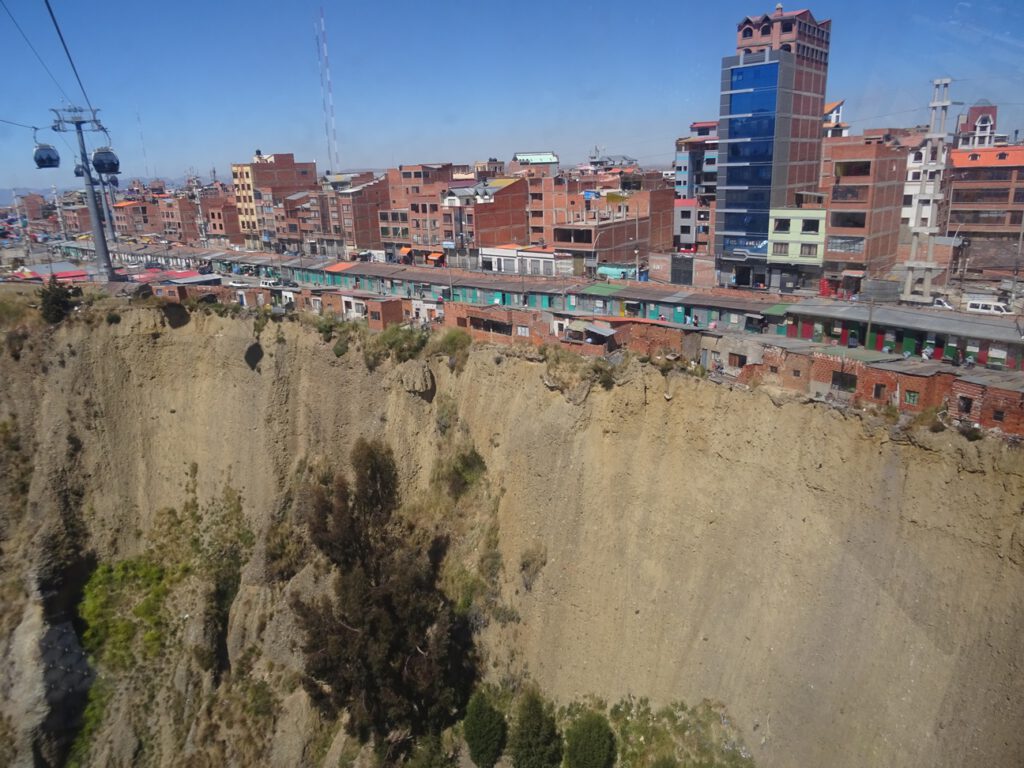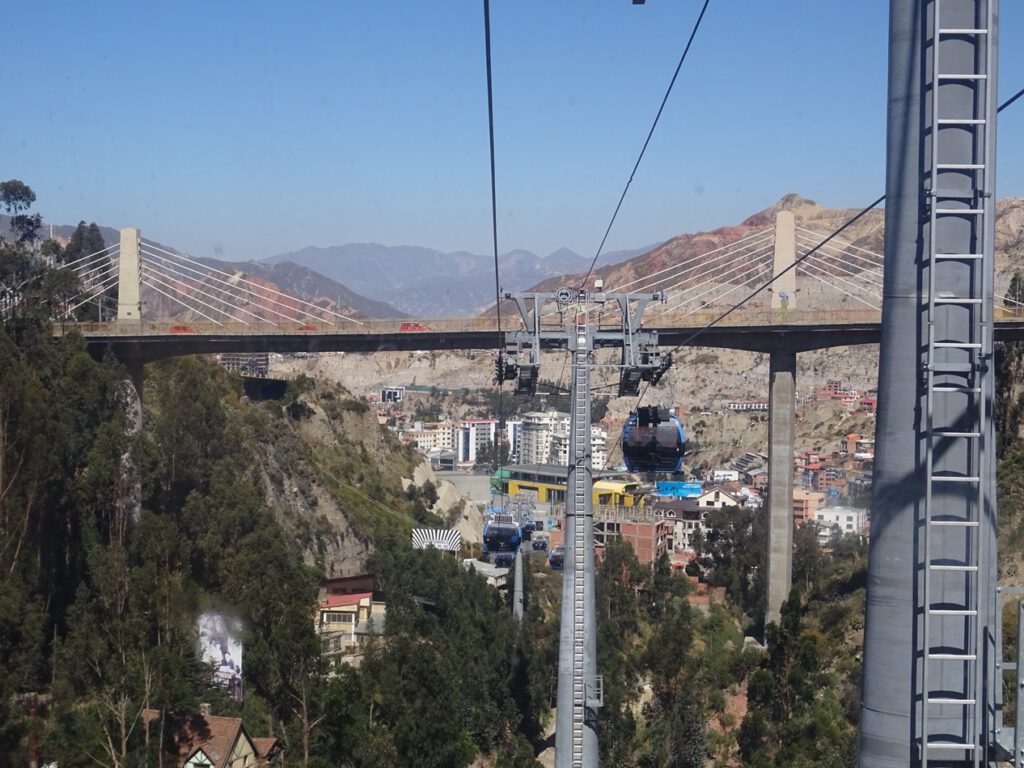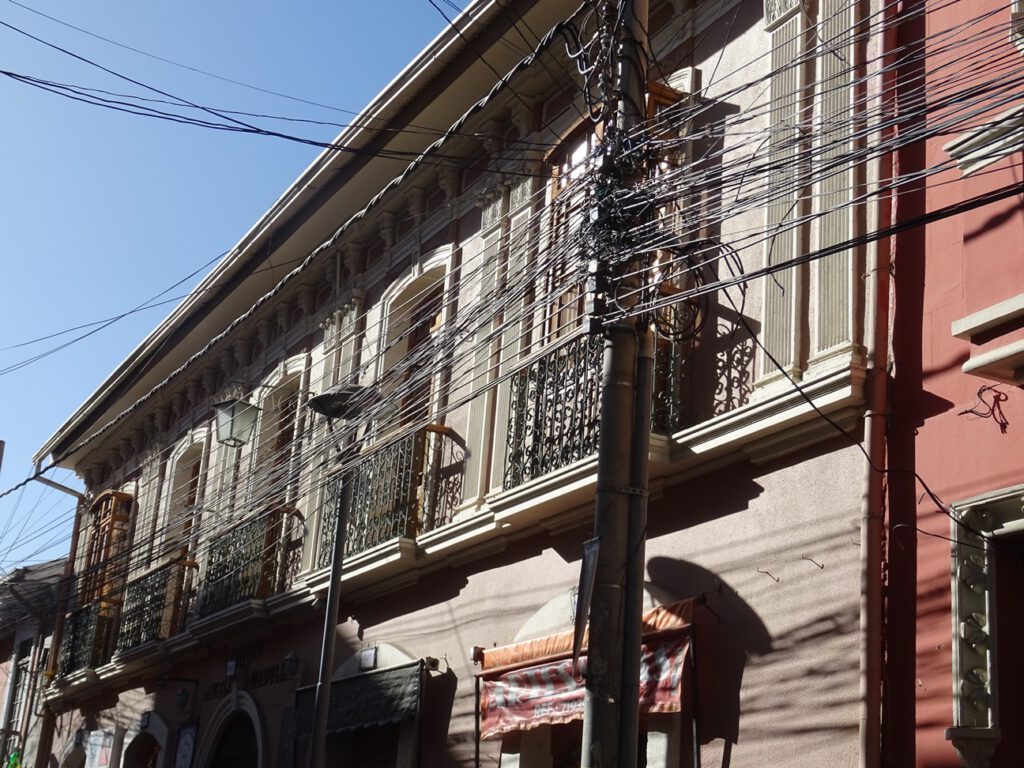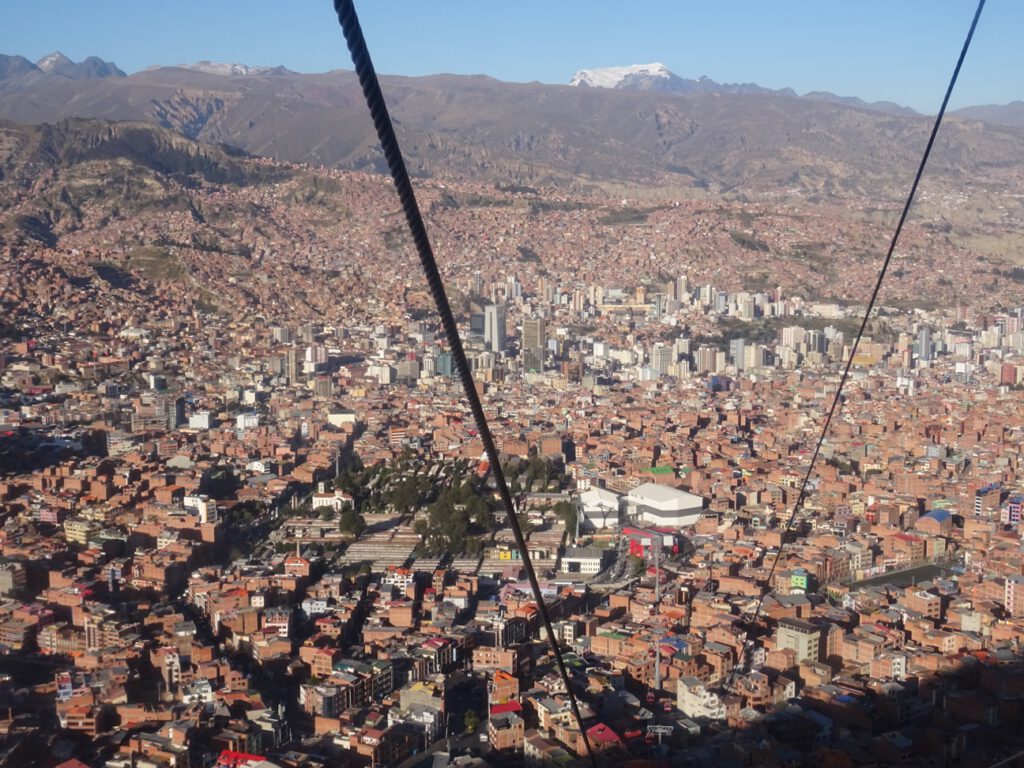Visiting La Paz
As planned, we left the bikes in the hotel in El Alto and went to visit the big city on the cable car. Next to us there was a stop from the blue line. The cable car is a great option to move around La Paz, and it offers great views.

The only problem is that it does not offer daily tickets, or any kind of discount. You need to buy each ticket individually, or get a small discount if you plan to do a transfer, but that’s about it.

Also, you can get a card to top up but it was relatively expensive for just one day, it is better to pay cash each time, but that means to wait a short queue every time. Tickets were cheap though, even if at the end of the day we had to buy quite a few.

The lines are all identified by colors, and you could nearly go all around La Paz connecting them. We first took one to the far corner away from El Alto, towards Sopocachi and Obrajes.

This is an upscale area with many skyscrapers and a few mansions, apart from most embassies. We then went back to the Prado station, which left us as close as possible to the center of the city.

As usual in Bolivian cities, the streets were full of people, vendors, and traffic. Due to the altitude and the steep roads, cars emit a lot of fumes so the pollution is quite bad, and the lack of rain does not help.

We went looking for a street famous among travelers for outdoor equipment at reasonable prices, Avenue Illampu. There we found a few, and Susanne got a nice fake jacket since she was feeling cold with the clothes she had brought from home.

Further down the street we bought a small whipala to mount on our trailer. By pure chance, nearby was the famous Witches’ market, a place full of shops selling all kinds of stuff to bring good luck: candles to burn, dried llamas fetuses to offer to the gods, images of saints, and everything in between.

Also nearby is Linares street, famous for its beautiful colonial buildings. Unfortunately, no attention has been paid to where the electrical cables are mounted, and they are always on the way to any decent picture.


By this time the kids were getting tired, and we were also approaching rush hour when everybody was going home, so the traffic and the noise was getting pretty bad.

So we decided to go back to El Alto, again in a cable car. The station for the red line used to be the main train station in La Paz. It is very sad that despite having a huge railway infrastructure in Bolivia, most of it is abandoned or infra-utilized, at the same time as most of the world is promoting trains as a clean and efficient way of transport. We have later learned that, if restored, you could go from Buenos Aires to Machu Picchu all by train! Call it Trans-Inca, charge a fortune, and fill it with wealthy tourists…

Many had told us about the great shops and diverse restaurants in La Paz, but since that is not what we are looking for when traveling with the kids, we decided we had enough and we would go back to the road the next day.






Katherine
Que chevere ese sistema de transporte. Pense era solo de un lado a otro pero veo q hay varies lineas. Lo q hace la ingenieria!